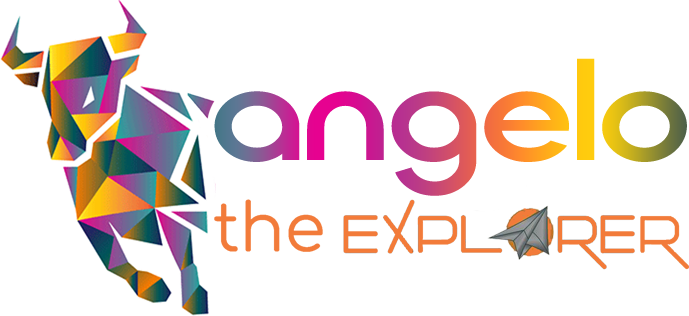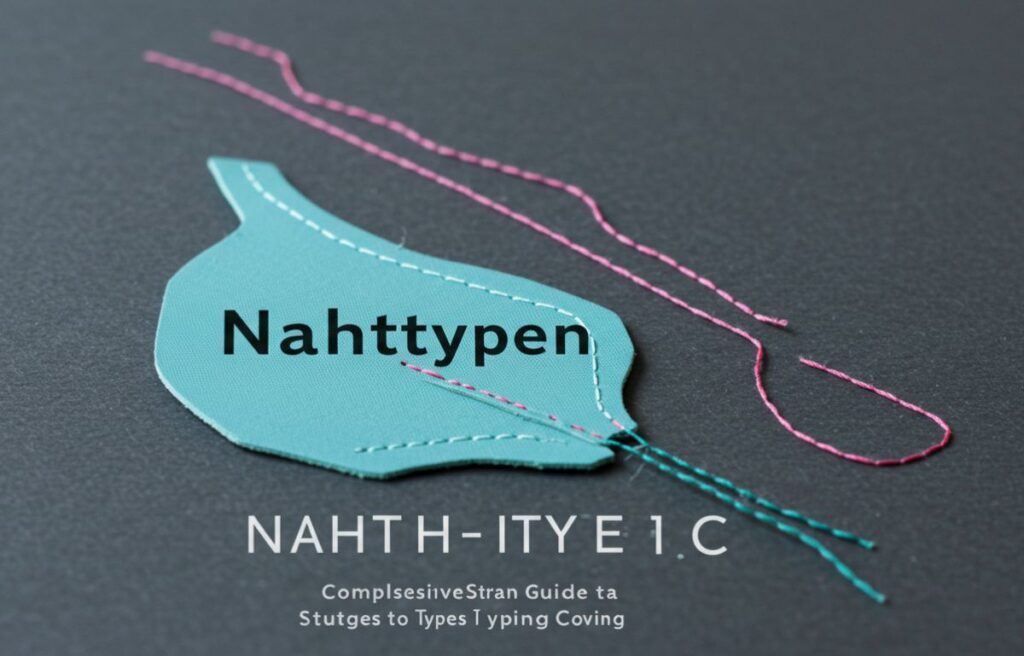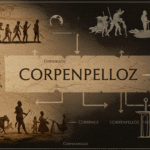Sewing is both an art and a science, where precision, creativity, and technical know-how intersect. One of the foundational concepts in sewing is the use of different Nahttypen—the German term for “stitch types.” Whether you’re a fashion designer, a home sewing enthusiast, or a textile engineering student, understanding various Nahttypen is critical for achieving the best results in your projects. In this article, we will explore the meaning, classification, uses, and benefits of common stitch types used across different textiles and techniques.
What Are Nahttypen?
The word “Nahttypen” directly translates from German to “types of seams” or “types of stitches” in English. In the context of sewing and textile manufacturing, Nahttypen refer to the different methods and structures used to join fabric pieces. These stitch types determine the durability, flexibility, appearance, and functionality of the final product.
Understanding the various Nahttypen is essential for selecting the right one for specific garments or fabric conditions. Using the wrong stitch type can result in structural failures, aesthetic issues, or discomfort.
Classification of Nahttypen
Stitch types can generally be classified into the following broad categories:
Simple or Plain Seam (Einfache Naht)
The plain seam is the most basic and widely used Nahttypen. It joins two fabric pieces edge to edge with a single line of stitching.
Applications:
-
Everyday clothing
-
Home textiles
-
Basic garment construction
Advantages:
-
Easy to sew
-
Versatile
-
Cost-effective
Flat-Felled Seam (Kappnaht)
This Nahttypen involves folding and stitching fabric edges for added strength. It is commonly used in denim garments like jeans.
Applications:
-
Heavy-duty clothing
-
Sportswear
-
Workwear
Advantages:
-
Durable and long-lasting
-
Clean, finished appearance
-
No raw edges
French Seam (Französische Naht)
The French seam is a double-stitched seam that hides raw edges inside, making it ideal for delicate fabrics.
Applications:
-
Lingerie
-
Sheer fabrics
-
Luxury clothing
Advantages:
-
Professional finish
-
Durable
-
Ideal for fine materials
Zigzag Stitch (Zickzacknaht)
This Nahttypen uses a zigzag motion to allow stretch and prevent fraying, making it common in knitwear.
Applications:
-
Stretch fabrics
-
Activewear
-
Decorative sewing
Advantages:
-
Flexible
-
Reinforces seams
-
Prevents unraveling
Overlock Stitch (Overlocknaht)
Also known as serging, this stitch trims and seals the edge of the fabric simultaneously. Specialized overlock machines are used for this Nahttypen.
Applications:
-
Mass production of garments
-
T-shirts, dresses, and more
-
Interior seams
Advantages:
-
Time-saving
-
Professional-grade finish
-
Strong and neat
Specialized Nahttypen in Technical Textiles
In industrial and high-performance applications, specialized Nahttypen are required:
Welded Seam (Geschweißte Naht)
Used in synthetic and waterproof materials, these seams are bonded using heat or chemicals rather than thread.
Applications:
-
Outdoor gear
-
Medical textiles
-
Rainwear
Advantages:
-
Waterproof
-
Lightweight
-
Seamless look
Blind Stitch (Blindstich)
This Nahttypen is used when stitches must not be visible on the garment’s outer surface, such as in hems or formal wear.
Applications:
-
Trousers and skirts
-
Curtains
-
Jackets
Advantages:
-
Invisible finish
-
Elegant appearance
-
Maintains garment shape
Choosing the Right Nahttypen for Your Project
When selecting the most suitable Nahttypen, consider the following:
-
Fabric Type: Delicate fabrics require clean finishes like French seams, while durable fabrics work well with flat-felled seams.
-
Functionality: For garments that stretch, zigzag or overlock stitches are ideal.
-
Aesthetics: Invisible seams like the blind stitch maintain a polished appearance.
-
Durability: If the clothing will undergo frequent wear and washing, reinforced seams like the flat-felled seam are essential.
Tools and Machines for Different Nahttypen
Different stitch types may require specific tools or sewing machine settings:
-
Sewing Machines: Most domestic machines support straight and zigzag stitches, and some offer overlock functionality.
-
Overlock (Serger) Machines: Designed specifically for overlock and coverstitch seams.
-
Blind Hem Foot: An attachment that makes blind stitching easier and more accurate.
-
Heat Sealers: Used in creating welded seams for synthetic and waterproof materials.
Common Mistakes to Avoid with Nahttypen
-
Using the Wrong Seam Type
Choosing a decorative seam for a high-stress area can lead to fabric tearing. -
Neglecting Seam Allowance
Not including enough seam allowance can compromise durability and fit. -
Inconsistent Stitch Length
Improper stitch length affects the appearance and strength of the seam. -
Skipping Edge Finishing
Leaving raw edges in certain fabrics leads to fraying and wear.
Innovations in Nahttypen Technology
The evolution of fabric technology has driven innovation in Nahttypen. Laser-cut seams, ultrasonic welding, and eco-friendly adhesive seams are increasingly common in technical and sustainable fashion. These developments not only improve function but also align with environmentally conscious manufacturing.
Conclusion
Mastering different Nahttypen empowers sewers and designers to elevate their craft. Each stitch type serves a unique function, whether it’s for strength, stretch, invisibility, or aesthetics. By understanding and selecting the right Nahttypen for your fabric and garment, you can enhance the final product’s appearance, durability, and wearability.
From simple plain seams to advanced welded stitches, Nahttypen represent a key element in the world of sewing. Whether you’re working on a DIY fashion piece or developing high-performance gear, understanding seam types is essential to your success.







